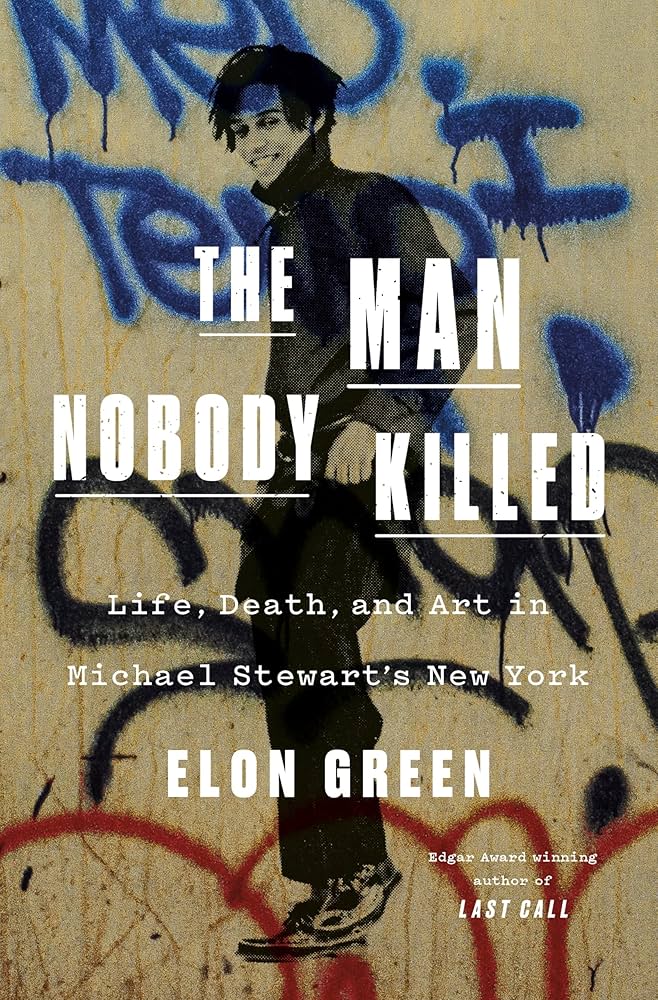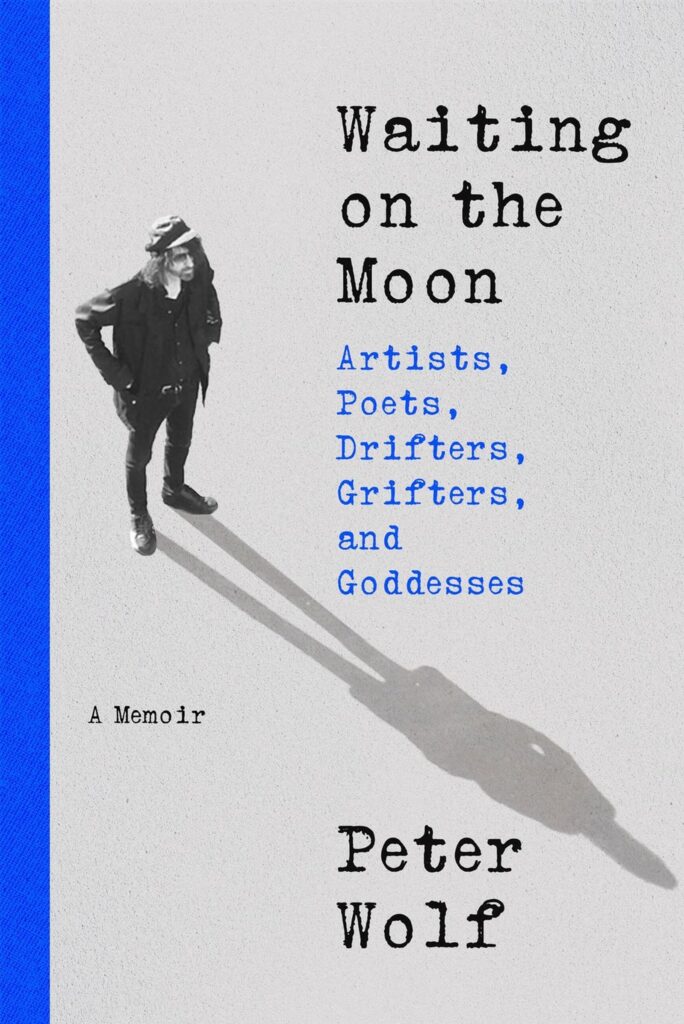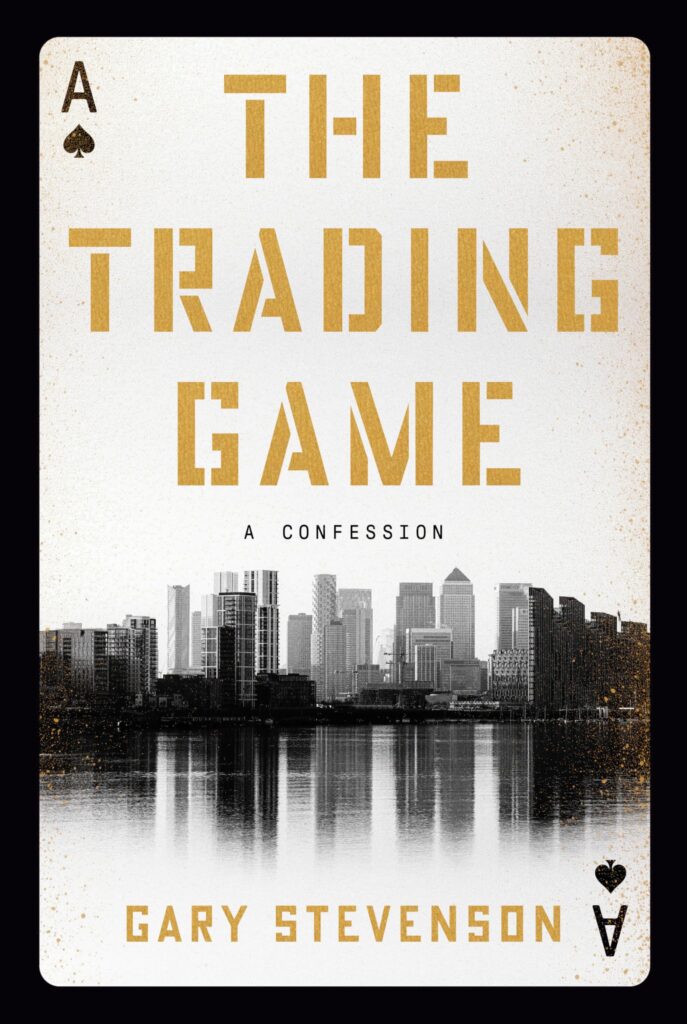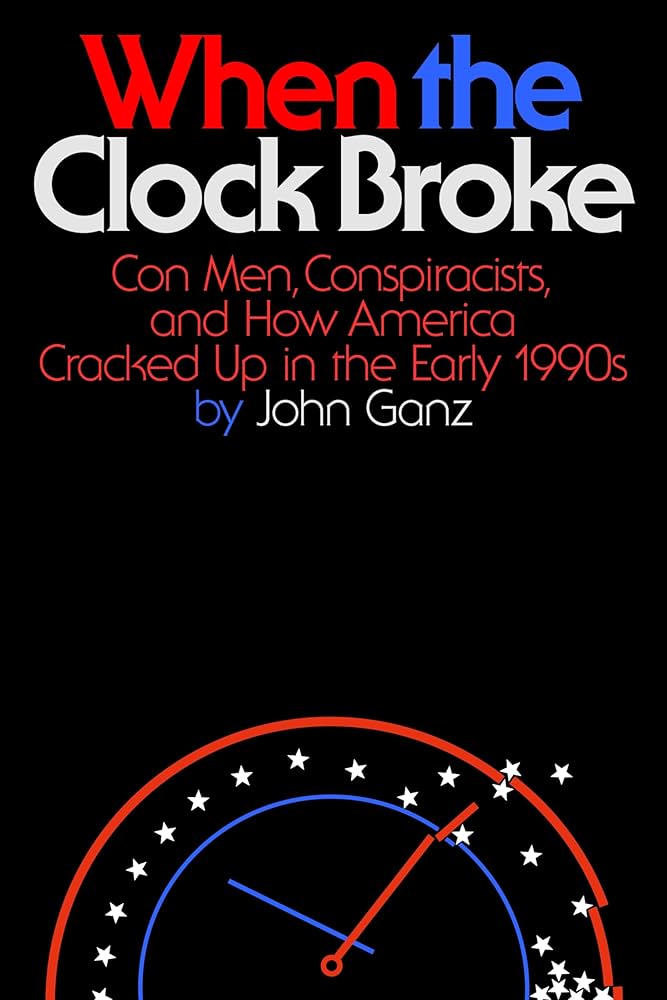Elon Green is an instant pickup for me – his first book Last Call: A True Story of Love, Lust, and Murder in Queer New York, is essential reading, and the subsequent HBO series was equally brilliant. Last Call is a case study in how to centre the victims in writing a true crime story. It’s a compelling and vividly told thriller, an immersive ride into the queer NYC scene during the AIDS epidemic.
Somehow1 his people forgot to notify me about his new book, but when I saw the release announcement of The Man Nobody Killed: Life, Death, and Art in Michael Stewart’s New York, I didn’t even read the summary. Order placed.
It’s another exemplary piece of nonfiction—but it’s denser than I thought. This isn’t a zippy whodunit; it’s a meticulous, painstakingly detailed portrait of Michael Stewart’s life, death, and the 1980s New York art scene that mourned him.
Stewart was a 25-year-old Black artist brutally beaten by NYC Transit Police in 1983 for allegedly tagging a subway wall. Witnesses, including a young Rob Zombie, saw officers pummel him with billy clubs choke him with a nightstick and literally throw him into the back of a police van. He arrived at Bellevue Hospital hog-tied with no heartbeat, and died after 13 days in a coma. It was the city’s most notorious police brutality case at the time, sparking outrage from the art scene. Green doesn’t just recount the horror; he weaves Stewart’s life—his abstract paintings, his Danceteria gigs, his brushes with Warhol—into a vivid tapestry of a city teetering between creativity and corruption.
I recently read Brad Gooch’s Radiant: The Life and Line of Keith Haring, which I loved for its vibrant dive into that same era. Green’s book feels like a darker, complementary piece—equally packed with Haring, Madonna, Warhol, and Basquiat, but centered on a tragedy that shook their world.
I was struck by how Green’s narrative intersects with Haring’s world. Gooch details Haring’s activism, like his “Crack Is Wack” mural and protests against police violence—Stewart’s death hit him hard, fueling his art’s urgency. Green noted Haring’s presence at rallies for Stewart, a friend from the East Village scene. Madonna, too, looms large in both books. Gooch paints her as Haring’s club-kid ally, dancing at Danceteria where Stewart worked; Green mentions her wearing a Stewart tribute shirt at a concert, amplifying the case. Warhol, ever the aloof observer in Gooch’s telling, hovers in Green’s story—Stewart once crashed his Factory, a bold move that didn’t make Warhol’s diary but ripples here. Basquiat, Haring’s collaborator in Gooch’s book, is gutted by Stewart’s death in Green’s—his art, raw with rage, mirrors the protests.
Stewart’s case seems so familiar, and in many ways it echoes today’s police violence. Green shows the Transit Police dodging blame—officers claimed Stewart “fell” or was drunk, passing the buck to medics or each other, with no convictions despite damning testimony. It took protests, art-world fury, and media spotlight to force any scrutiny, much like George Floyd or Breonna Taylor’s cases decades later. The system’s inertia and the way cops close ranks feels shockingly familiar. Green doesn’t preach, but the parallels are stark: justice for Black victims still demands a fight, then and now.
Green’s research—court docs, interviews, news clips—is relentless, making every page a time machine to 1983. It’s denser than I expected, less thriller than history lesson, but that’s its strength: it forces you to sit with Stewart’s loss and the system that failed him.
It’s not perfect—sometimes the detail feels like wading through archives, but it’s a riveting and shockingly current. I’d be shocked if this wasn’t given the HBO treatment as well. If it is, it’ll be appointment viewing.








